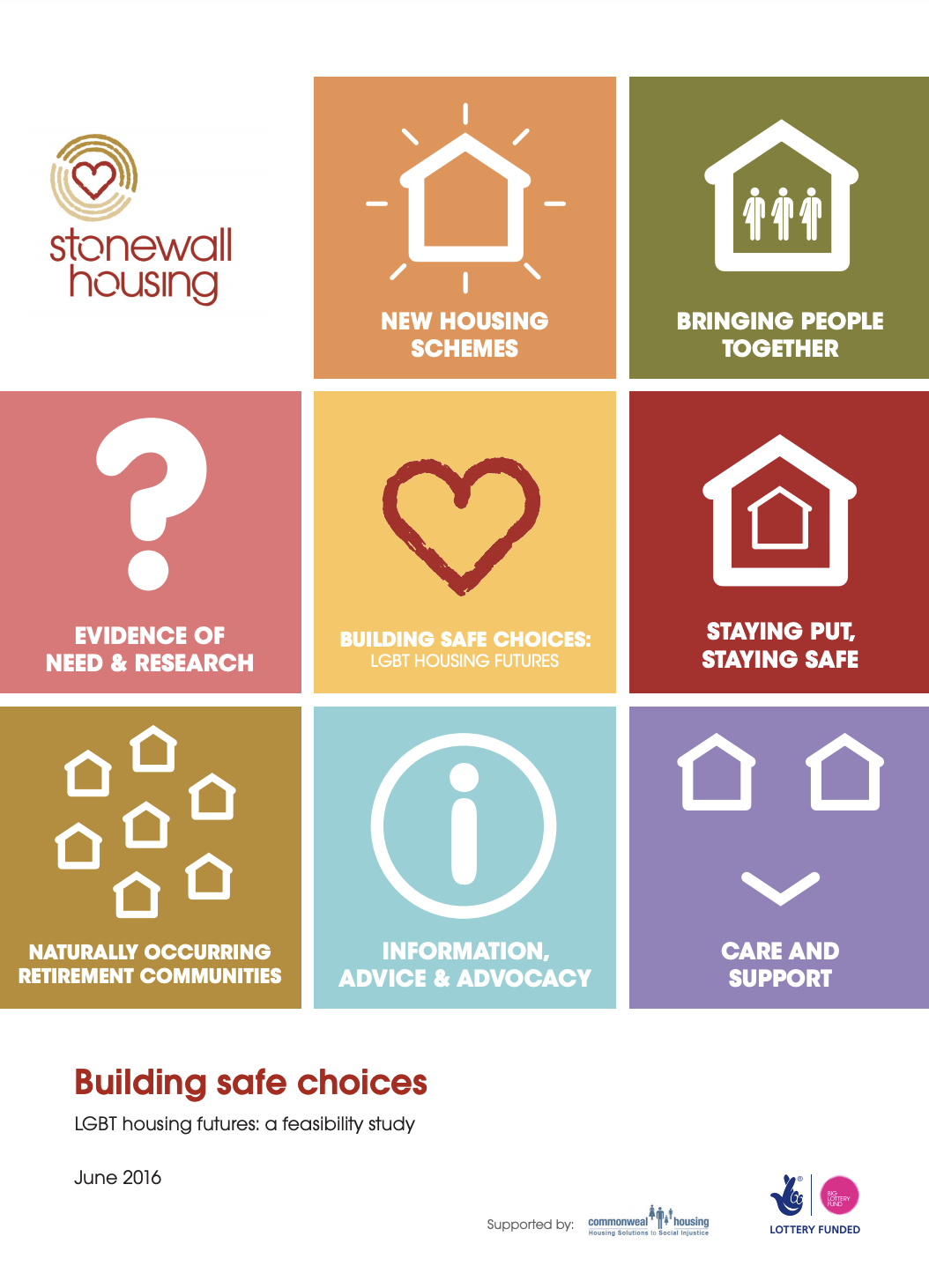2016 REPORT
LGBT housing futures: a feasibility study
Staying put, staying safe
Only a small proportion of older LGBT people live in specialist housing, sheltered housing or extra care schemes. Most stay put in their existing homes, and look to find the support, help and companionship they need in later life, without moving.
So what happens to older LGBT people who choose to stay where they are?
Although there are parallels with the wider population, older LGBT people will feel at greater risk of isolation, and fear not being able to access the appropriate support or care.
For many years, Stonewall Housing has urged housing providers to include sexuality and gender monitoring in their equalities monitoring, but this is unusual. As a result, there are few statistics about the proportion of LGBT residents living in social housing.
One result is that some providers – particularly in sheltered housing or care homes – will assume there are no LGBT residents. Older LGBT residents won’t feel safe about coming out. As a consequence, their needs are ignored.
A number of housing associations, including Hanover Housing, Anchor, London and Quadrant, Affinity Sutton and Housing 21 have established networks and support groups for their residents. Some include staff in these groups: others have separate networks for LGBT staff and straight allies. In 2015, HouseProud was launched: it’s a national forum of housing associations that share best practice in supporting LGBT residents and staff.
Resources
There are a number of publications for housing and support providers on meeting the needs of LGBT residents:
- Delivering housing services to lesbian, gay, bisexual and transgender customers (Chartered Institute of Housing, 2011)
- Building a sense of community: Including older LGBT in the way we develop and deliver housing with care (Housing LIN, 2013)
- Working with older lesbian, gay and bisexual people: A guide for care and support services (Stonewall, 2011)
While these initiatives and reports provide resources for housing providers, older LGBT people continue to say that they lack confidence in housing care and support providers to meet their needs. Until there is good evidence that is widely available, it is going to take a long time to shift these fears and concerns.

I am very wary of housing and care schemes full stop, let alone for LGBT people who are at increased risk of vulnerability. LGBT people in ‘mainstream’ schemes suffer from the fact that support workers are recruited and managed by the housing scheme rather than being under their direct control, with their benefits/care payments being paid directly to the housing scheme. Gay men in this type of housing talk about not being able to bring their partners into shared housing; having to save up for private support in order to attend LGBT events and venues; and being placed in women’s housing as they are seen as a potential threat to other male residents/tenants.
Meanwhile locally to me, an architect-designed ‘state of the art’ apartment block for people with mental health difficulties has been treated by the housing association as a ‘dumping ground’ for ‘problem tenants’. Highly vulnerable individuals, whose homes have been taken over by sex workers and drug dealers, have gone to the housing association and social services for help in vain. The police have been their only support, and the police report that in general, this type of ‘mate crime’ against vulnerable people is rising rapidly. This is why I would only consider moving into an LGBT-specific scheme; would prefer to have younger people sharing the development; and would want any shared form of care provision to be very carefully planned and under the direct control of the residents.
I would want providers to ask lgbt communities what we need and specify that they provide services for LGBT communities, involve LGBT people in management committee/trustees or staff. So it’s being explicit.
As well as older people’s services, providers should also consider how other projects that cater for all ages are meeting the needs of older (and younger) LGBT people. For instance, the new Housing First projects that aim to meet the needs of homeless people: http://www.homeless.org.uk/our-work/national-projects/housing-first-england
As more projects may be considering health and care and the integration with housing (e.g. for those with complex needs), how are commissioners considering the needs of LGBT communities when they design and deliver services